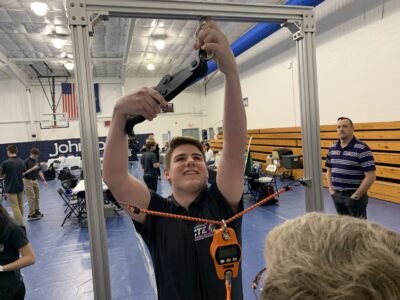Johnson College will host its 30th Annual golf tournament on Friday, May 19, 2023, at the Pine Hills Country Club in Taylor, PA. In observance of the 30th anniversary, this year’s tournament will feature added anniversary course competitions, raffle prize drawing, and a BBQ dinner for all to enjoy.
All proceeds from the annual golf tournament support the Johnson College Presidential Scholarship Fund. Last year’s tournament raised more than $47,000 to support the Presidential Scholarship Fund. The scholarships are presented each fall to full-time students demonstrating financial need to finish their educational journey.
To learn more about this event or to register to golf, visit johnson.edu/golf.
Sponsors of this event to date include:
Presenting Sponsor: Gerrity’s Supermarkets
Gold Sponsors: Eastern Atlantic States Regional Council of Carpenters, Fastenal Company, L.R. Costanzo Company, Inc., Peoples Security Bank & Trust, Pepsi, PNC Bank, Simplex Homes, Vacendak Construction.
Silver Sponsor: Cable Associates, Toyota of Scranton
Cart Sponsor: ShopRite
Golfer Gift Sponsor: Troy Mechanical, Inc.
Breakfast Sponsor: Action Lift
Lunch Sponsor: Sordoni Construction Services, Inc.
Cocktail Hour Sponsor: Topp Business Solutions
Dinner Sponsor: Stevens & Lee
Hole-In-One Sponsor: Tasca Ford
Mulligan Sponsor: American Eagle Outfitters
Exclusive Tee Sponsors: Ability Recovery Service, LLC, CP3 Energy Systems, I.B.E.W Local #81, Knowles Associates, LLC, Milnes Engineering, NRG Controls North, Inc., Waste Management.
Presidential Scholarship Sponsors: Candy Frye, Citizens Savings Bank, Fiorelli Catering, Highland Associates
Pot O’Gold Sponsor: Nunzi’s Advertising
Platinum Marketing Sponsor: Condron Sweda Advertising
Advertising Sponsor: Lamar Advertising
Gold Print Sponsor: Sprint Print, Inc.
Pictured left to right –
Front row: Peter Danchak, PNC Bank; Joseph Fasula, Gerrity’s Supermarkets; Dr. Katie Pittelli, Johnson College; Joyce Fasula, Gerrity’s Supermarkets; Deborah Kolsovsky, PNC Bank; and David Boniello, Simplex Homes.
Back row: Karen Baker, Johnson College; Bill Stevens, Sprint Print; Candy Frye, L.R. Costanzo Company, Inc.; Lisa Bonacci, Citizens Savings Bank; Marcelo DeSousa, Fastenal Company; Frank Kilyanek, NRG Controls North, Inc.; and Mary Kern, Johnson College.









